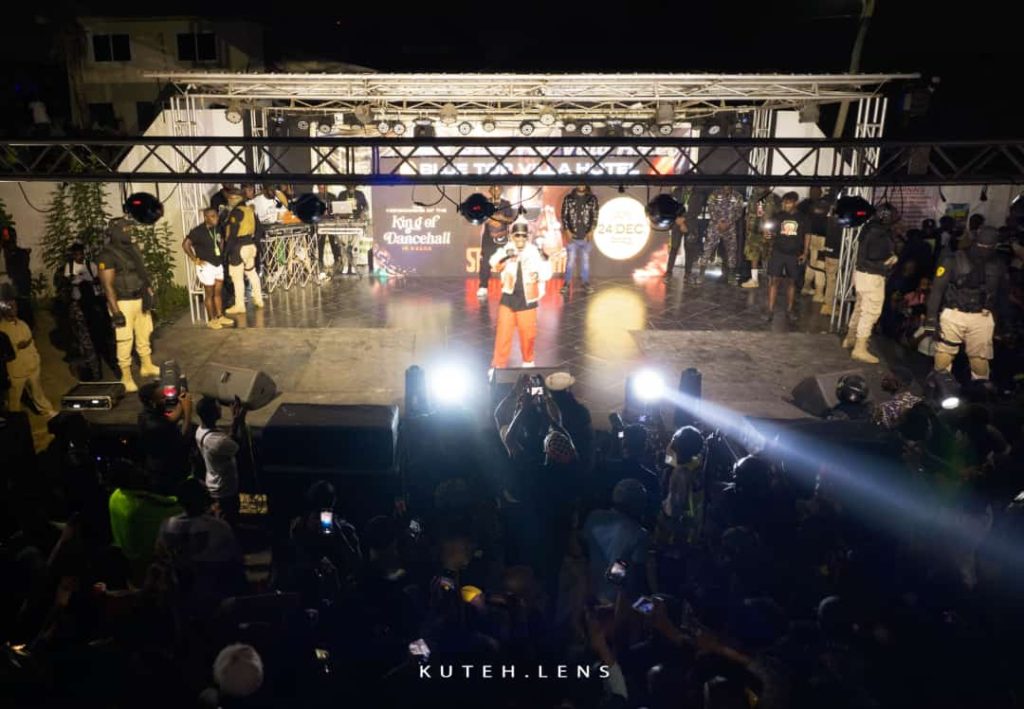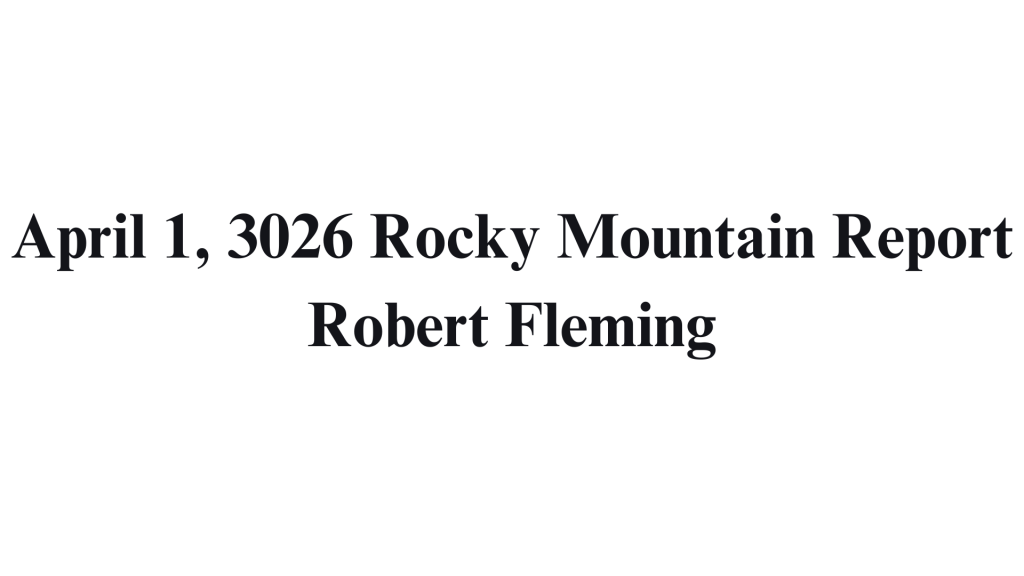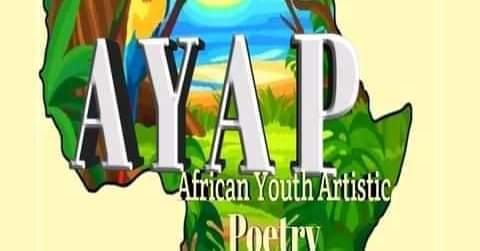Un Amour Interdit (A Forbidden Love)
The ancient eight-track player plays a tape of the short-lived super group Blind Faith’s eponymously titled, only studio album. Steve Winwood’s soulful tenor reaches out through the speakers to grab the listener with “Well All Right,” the Buddy Holly classic. Into the darkened room stumbles a young 20-something woman, giggling, only half-dressed and in the process of disrobing. A young man of like age follows close on her heels, divesting himself of shirt, trousers and shoes as he proceeds. He moves with the clunkiness of the inebriated.
The woman’s scent is musky and exotic; he finds it intoxicating and hard to resist, yet he stops himself. She is lying back on the bed, waiting for him. The fruity scent of inexpensive wine is in the air.
“Aiden,” she says coyly, “don’t you want me?” He looks down at her. She is clad now in only her undergarments. She hooks a finger under her wispy bra strap. stretches it and asks again, “don’t you want me?” Aiden draws a great breath, releases it. He too is down to his shorts.
“I…I’m not sure.” His swollen manhood gives the lie to that statement. He blushes, thinks of his girlfriend, back at the apartment, but his thoughts are fleeting.
“Well, when you figure it out, you let me know, okay?” She turns over onto her belly, pulls down her panties and waits expectantly.
Breathing heavily now, Aiden crosses the room, climbs atop the bed and, pulling down his shorts, grabs her hips and without a word slips inside the girl, filling her up. She moans with satisfaction and he begins stroking in and out. He grips her shoulders for better leverage and is soon pumping rapidly. After only five minutes, he climaxes with a little moan, then, pulling himself out and off of her, he apologizes.
“Sorry, Lynn,” he says, embarrassed.
Lynn smiles. “Not a problem,” she says, turning around and gripping his manhood. “Let’s do it again.” And they do, several times. By the end of the evening of wine, weed and sex, Aiden can hardly remember his girlfriend’s name. The two lovers climb under the covers and sleep, their bodies still entwined.
Six hours later, when he awakens, Aiden can think of nothing but Yvonne–he has at last remembered the name of his cohabiting girlfriend. The sun is bursting through the window on the east side of the bedroom, and is shining in his eyes, telling him that it is morning. He moves his head and feels the alcohol stupor from the night before. A dense wave of regret passes over him. He groans.
His voice wakens the girl–Lynn, he now recalls–and she stirs. Turning over, she says brightly, “Hello–lover!” Aiden’s heart sinks and recriminations batter his body. He averts his eyes. “What’s the matter, Aiden?” she asks. “Are you being shy? You weren’t shy last night,” she tells him. “You gave me a workout; I never saw a man come so much…”
He puts up his hand. “Please, Lynn,” he said, “don’t.”
“Why not?” she comes back at him.”
“I have a girlfriend,” he explains.
“I know you do,” she says. “That’s the whole point, you little jerk.” Her voice is cold.
“What do you mean?” he asks. “You knew I was seeing someone?”
“Of course. I know you’re living with Yvonne Malone.” She smiles cruelly. “That’s why I seduced you.”
Aiden squints his eyes. “But why? What’s Yvonne to you?”
“You are so clueless,” remarks Lynn with scorn. “Yvonne and I have a history. Long time ago, we were in high school together. We used to hang out.” When Aiden doesn’t reply, she continues, “I was dating this really cool guy, right, and Yvonne was dating, like, his brother. We used to double date sometimes. Well, she thought it might be fun to lay my boyfriend, you know, do brothers? So she ruined it for Brad and me.”
“Why would she do that?” asks Aiden, baffled.
“Because. She. Could.” replies a vengeful Lynn.
“So that’s the reason that you…” begins Aiden.
“Look, you’re alright. You’re cute, even. And you’ve got a….lot of energy, but your being Yvonne’s lover is what did it; nothing else. Sorry to burst your bubble, Aiden.”
Aiden just sits there, an absorbent sponge, taking in all that the girl he’d coupled with had to say. He remains sitting on the bed.
“One other thing, Aiden?” says Lynn. He looks up.
“Beat it, okay?” she mutters around a cigarette. “I’m done with you for now.”
—————————–
That night, Aiden lay with his head on the pillow in his bed at the apartment he shares with his girlfriend. He is waiting for her to return from her bartending job that supports the two of them while he attends college. Yvonne had completed school the previous semester. He hears a key turn in the lock and the door open and then close. Aiden’s mind is awhirl with thoughts that he had betrayed the woman he at least thought that he loved. His self-recriminations and abject guilt have become a boulder that he is desperately trying to push uphill. Suddenly she’s framed in the doorway, smiling at his prone form in the dim light of the bedside lamp. She is so beautiful, he thinks; how could he have cheated on her?
“Hello, lover,” she greets him. He freezes; that’s how Lynn had greeted him this morning, after their night of debauchery. “Are you awake, Aiden?” she whispers, dropping her purse on the bureau. He sees by the clock on the dresser that it’s past 3:00am.
“I’m awake,” he whispers back, wondering if his voice will betray him.
Yvonne begins to remove her clothes, dropping them onto a chair.
“How was your night?” he asks. He has to act normal, he tells himself.
“The usual,” she replies, pulling down her tight denim jeans. From his place beneath the covers, Aiden begins to get hard, then curses himself; that’s how he got in this position in the first place.
Completely nude now, Yvonne slides under the covers and spoons with her lover. “Ooh,” she coos playfully. “I see you’re ready to play,” and she laughs lightly. Her laugh is musical, like ice tinkling in a glass. She reaches out and touches him under the covers. His physical reaction is not what she’d been expecting. “What is it, Baby?” she asks. Aiden’s cheeks turn crimson. “Are you being shy tonight?” she asks.
Why, wonders Aiden, does she keep using the same words and phrases that Lynn had?
Yvonne tries to rekindle the fires of romance for a moment, then says, “Don’t feel like playing tonight? That’s alright. I had a long night. It is a first, though,” she remarks, then wrapping her arm around Aiden’s waist, she is soon fast asleep.
___________________
Aiden is busy dust-mopping the floor of the student union two days later, his part- time college work study job, when he is startled by a hand on his buttocks. Turning swiftly around he finds his newest and worst nightmare: Lynn is standing behind him, her hand still on his ass. Hurriedly, he bats her hand away.
“S’matter, Lover?” she asks in a sing song voice. “Are we getting shy again?” She titters merrily. He wishes Lynn and Yvonne would stop parroting one another.
“What do you want?” he asks with a frown. He had been supposed to work overnight in the building the night he ended up spending with Lynn. Now what?
“That’s more like it,” she says approvingly. “Let’s just get to the meat of our conversation, shall we?” She makes a playful grab for his crotch, but he backs hurriedly away. She laughs aloud. He gazes at her. She isn’t nearly as attractive as she’d appeared the other night. Funny what a couple of joints and a bottle of wine would do to your judgement, he thinks yet again.
“Have you told her yet?”
“What?” he asks fecklessly. He knew what.
Lynn smirks. “You haven’t, or else you wouldn’t play stupid.”
“Why do you even care, Lynn?’ he asks. “It’s between her and me.”
“Strictly speaking, that’s not true,” she asserts.
He furrows his brow. “What do you mean?” he asks.
“Another party knows your secret,” she explains. “Me.” She pokes a thumb into her chest.
“What…are you going to do?” he asks, suddenly afraid.
“I’m gonna tell her, Aiden–if you don’t.” she replies smugly. “But I think it would be more delicious coming from you.”
“But why? Do you hate me that much?” he asks.
“Not you; Yvonne! I told you about her and Brad. I hate that bitch! You,” she adds with a dismissive wave of her hand, “are immaterial.” And she walks off, takes an elevator to somewhere. Though Aiden doesn’t know it now, he’ll never see the woman again. But her effect will continue to be felt.
________________
“What is wrong, Aiden?” Yvonne asks for the umpteenth time in the last week. Ever since his night with Lynn, Yvonne has seemed to be on his case, asking questions, relentlessly interrogating him. In fairness, he realizes, he has been acting odd, unaccountably paranoid and just off kilter. Also, he hasn’t been able to perform in bed, a trouble he’s never experienced before. He has to cut Yvonne a break. “You can tell me…anything,” she said with obvious difficulty. What was that about? he wonders. “Do you want to take me to bed?” she asks hopefully, putting her hands around his neck the way she always did.
“No!” he all but shouts, pulling away. “Is that all you think about, sex?’ he asks irrationally. That was rich, he knows, coming from him.
“I just thought,” she begins. “You’ve had…a little trouble lately, is all, and…” He stares at her. “It’s natural,” she said, “it’s normal. Everyone goes through it.” He immediately feels remorseful. But then she makes it all worse, with “I love you, Aiden. And I’d love you even if we never had sex again. But, is it something I’m doing, or not doing?” He expels a tortured breath.
“I’m sorry, Yvie, ” he says. “It’s not you; it’s all on me.” She stares expectantly at him, saying nothing. “I…I was unfaithful to you,” he mutters wretchedly.
Unbeckoned, Yvonne approaches him, put her arms around Aiden’s neck and rests her head against his chest. “Is that all?” she asks softly.
“Is that all?” he repeats incredulously. “Yvie, I cheated on you, I screwed around,” he goes on.
“Are you proud of it, Aiden?” she asks, pulling back and with a serious look in her eyes.
“No. No, of course not,” he assures her.
“Do you love her?” she asks next.
“No. Definitely not.”
“It’s alright, then,” and she nuzzles him some more.
“Wow,” he says, relieved. “I didn’t think you’d react this way.”
“How did you think I’d react?”
“I don’t know,” he says. “Anger, tears, I don’t know.”
“Aiden, I’m twenty seven years old; I’ve been cheated on by lovers before. Anyone can slip. We’ll get past this.” At this Aiden smiles with relief. She pulls back from his chest again. “But don’t ever do it again.” He nods. “We won’t mention it again,” she says. She grows suddenly quiet, then looks up at him again. “I don’t know her, do I?” she asks. Aiden doesn’t reply but unfortunately, Yvonne doesn’t let it go. “Do I know her? Aiden?”
He closes his eyes in contrition. “It was Lynn,” he tells her.
It was Yvonne’s turn to remain quiet. “Lynn?” she repeats. He nods. “I don’t know any Lynn,” she says.
“She said her name was Lynn,” he says.
“Where did you meet?” she asks.
“At work.”
“In the union? She’s a student?”
He shrugs. “I don’t know. There’re twenty thousand students enrolled, I don’t know them all. She invited me to a party after work, and….”
“Describe her,” said Yvonne. Aiden did. “That description could fit a thousand girls,” she remarks. “Did she have any distinguishing characteristics? An accent, anything?” she asks.
Aiden turned over in his mind whether to tell her about the tattoo, decided to come totally clean. “She did have a tattoo, now that you mention it.”
“Where?” asked Yvonne.
Now Aiden wishes he’d never brought the tattoo up. “Uh, inside her thigh,” he says awkwardly.
“Left thigh, even with her vagina?” asks Yvonne unexpectedly.
‘Yeah,” says Aiden. “How did you know that?”
“Her name’s not Lynn,” Yvonne tells him, “It’s Diana.”
“So you do know her, then.” She said nothing. “She told me how, in high school, you stole her boyfriend, had a one-night stand with him, and you were dating his brother, and…” Aiden realizes she isn’t really listening to him. “Hey,” he says, touching her sleeve, “is any of that true?”
“No.” She shakes her head. “None of it.”
Aiden has been secretly hoping it was all a lie. He doesn’t like the idea of his woman sleeping around. The irony of this is quite lost on him. “How do you know Lynn…Diana, then?” he asks. “Did you know her in high school?”
“Yes,” she says shortly. “We were lovers.”
Aiden couldn’t help it: his eyes bug out. “Lovers?” he exclaims, louder than he had meant to.
“Don’t sound so shocked,” she admonishes gently. “A lot of girls pass through a lesbian phase when they’re young. Didn’t you have any homosexual experiences when you were a boy?”
“No!” he says, shuddering self-consciously. “How could you?”
“How could I what?” asks Yvonne. “Eat pussy?” Aiden’s eyes bug out again. “Why not?’ she says lightly. “You have no problem doing it. In fact, you’re pretty good at it; not as good as a girl, though,” she adds in a thoughtful aside to herself. She checks her boyfriend’s expression, winces, and said, “no, that’s not true: you’re very good.” Aiden is frowning darkly now. “This doesn’t make a difference, does it?” she asks. “What I did in high school, I mean. It all happened more than a decade ago!” Aiden still says nothing. “I mean, I don’t hold it against you what you did before we met.”
“Well, I didn’t suck any cock before we met,” he says with disgust in his voice.
“Well, don’t look down on it, Aiden,” she scolds. “You like it well enough when I go down on you, don’t you?”
“That’s different,” he snaps.
“How?” she snaps back at him.
He turns away. “Please don’t turn your back on me, Aiden.” she implores him. “Let’s talk about this. I’ll answer any questions you’ve got.”
Aiden thinks about this for a moment, then says, “I don’t see how you can have sex with a girl.”
“You have sex with girls,” she points out.
“Don’t start that again,” he says. “It’s different, and you know it.”
“Women’s bodies are beautiful,” she says. “To everyone. You know what I’m saying?”
Aiden thinks about this for a moment, concedes that Yvonne is right. Women’s bodies were beautiful. “Well,” he says, “so long as that lesbian shit is all in your past.” When she purses her lips thoughtfully, he adds, “It is all in the past, isn’t it?”
“I have a rather wild past,” she admits. “But I’ve told you before, I’ll never lie to you, Aiden,” she says. He frowns anew. “I’m with you; I love you. I love you more than any partner I’ve ever had and I’m committed to you.” When he releases a relieved breath, she goes on, “But we’re not engaged. We’re a couple, but does that mean we’ll be together forever? Neither of us have pledged to one another for an eternity or anything. And if and when we do break up, I can’t say for sure that I won’t take another lover–of either sex.”
“So you’re deep down, still a freakin’ lesbian?” he says accusingly. He knows that he isn’t handling this well, but he hadn’t bargained on this…whatever “this” was. And the bickering continues into the night.
“We’re at an impasse, Aiden,” says Yvonne at last. “You no longer trust me, and you’ve given me ample reason not to trust you. It’s not the infidelity I mistrust you for,” she explains. “It’s that I don’t think you have my back anymore. “You think less of me than you did last night. Or maybe I’m wrong; maybe you never did think a lot of me, as a woman–as a person.”
_______________
Aiden sits in the lobby of the Hilton, waiting. He isn’t sure why he’s even come, but Yvonne had said she was anxious to see him again. She had said over the phone that she wanted Aiden to meet the man she was engaged to be married to. Also, she had a really important question for him. Aiden had had quite enough of romance himself, having just exited his third marriage in rapid succession. He had never again found someone he was as content with as he had been with Yvonne. She’d said that this would be her own second trip down the aisle. Well, he thought, it could happen to anyone. He drummed with his fingers on the arms of the chair, impatient in spite of any misgivings about a reunion. He wonders if Yvonne has changed much in the eight years since her abrupt departure. He’d gained a few pounds. He looks down as his thickening middle, frowns. He hears his name called. He looks up, spies her, coming his way. My God, he thinks, she is still beautiful.
“Aiden,” she says happily, so glad to see him. With effort, he pulls his bulk from the overstuffed chair, steps forward for her embrace. She still places her hands just so around his neck. She kisses him on the mouth. “It’s so great to see you!” she exclaims with warmth. “You look great!”
“Now,” he chides. “You said you’d never lie to me, remember?” She laughs. She seems so happy. Whoever this guy was, he’d better treat her right, he thinks proprietarily. “So where’s your better half?” he asks.
She glances behind her. “Oh! Here she comes.” He freezes, uncertain he’d heard right.
“She?” he inquires almost inaudibly. Well, he thinks glumly, she never technically said that she was marrying a man, only that she was engaged.
Her joyous expression doesn’t change. “Uh huh. And you’re going to just love her.” For a moment Aiden experiences his own personal nightmare: would it be Diana, the erstwhile Lynn of both their pasts? He shivers involuntarily. What cruel irony, he thinks, but then looks up to see a stranger peeping over Yvonne’s shoulder.
“Aiden,” says Yvonne lovingly, “this is Chloe!” They both look at each other uncertainly for a moment, but then Aiden’s features relax into a broad smile. Chloe is about Yvonne’s age and very pretty–not stunning like Yvonne, but then few women are.
“Nice to finally meet the man of Yvonne’s dreams,” she says with a bright, easy smile, and sticks her hand out for a shake.
“Hell with that,” scoffs Aiden, and sweeps Chloe into his arms and twirls her round and around. Chloe laughs giddily.
“I told you that you’d love him,” laughs Yvonne.
As the trio sits around the hotel bar, deep into the afternoon, sipping drinks with little umbrellas in them, Aiden reminds his one time lover, “You said you had an important question to ask me.”
Yvonne and Chloe exchange a glance. “I do, Aiden.”
“Save the ‘I do’s’ for the ceremony,” he jokes lightly. Both women roll their eyes and grin.
“Chloe and I are getting married in a month…” Aiden nods. “Would you stand up for us?”
Aiden blinks in mild confusion. “Which one?” he asks.
“Both of us,” chorus the women.
Yvonne says, “We want you to give the brides away!” They all laugh joyfully.
“On one condition,” says Aiden.
“Name it,” says Yvonne.
“That I get both garters,” he says with a giddy laugh. It occurs to him that the three off them were getting pretty loaded. The table was covered with empty glasses.
Chloe, quite reserved at first, but who has become steadily more loquacious with the consumption of spirits, remarks, slurring her words a little, “Aiden, Yvie has told me all about you! Chloe’s eyes are shining. Aiden looks at Yvonne; her eyes seem brighter too, glittering like diamonds. “Do you like Hawaii,” Chloe asks. He agrees that he does.
“Then,” she suggested, with an eerie grin, “we might even take you along on the honeymoon!”



















